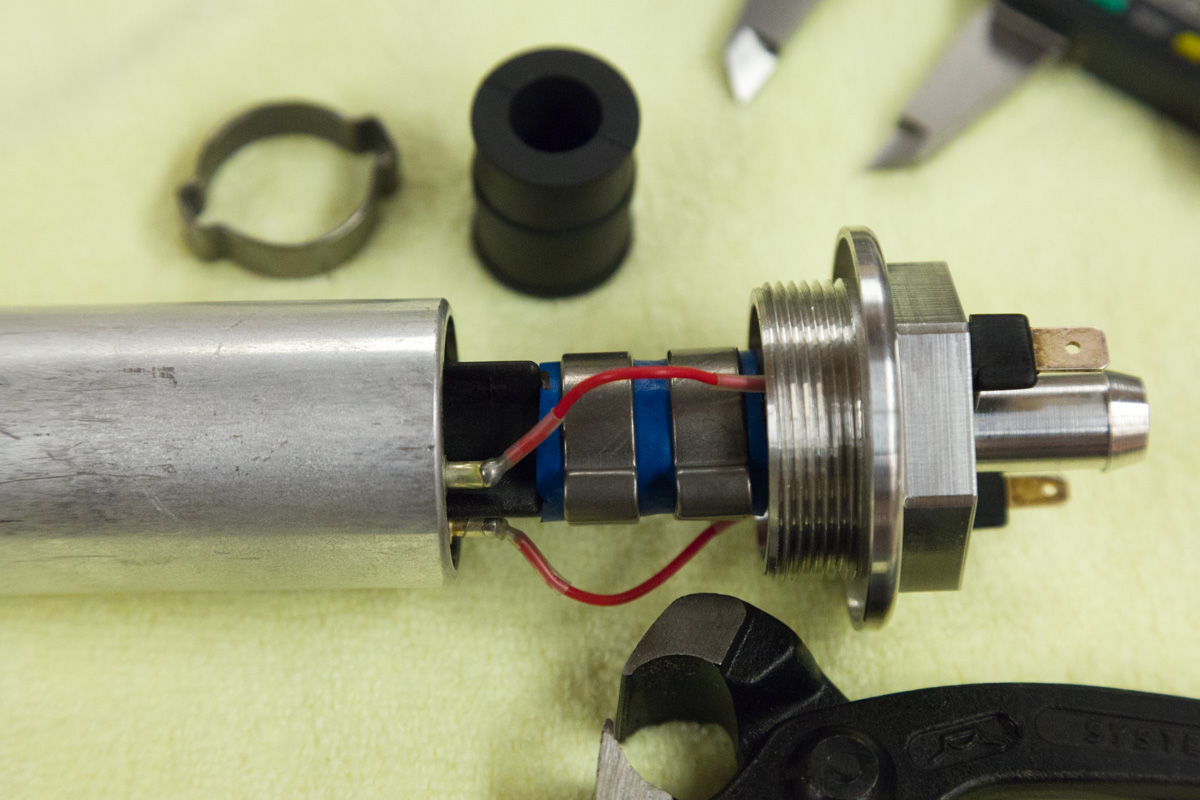

Coming back from a 4 hour trip with lots of
hard acceleration and 100+ runs, we pulled up to a stop sign and the car died.
In the last few minutes before the stop sign we heard a very low pitch
whirring/growling noise from the rear of the car. It was barely audible but
definitely a new sound.
At the stop sign I repeatedly tried starting the car; it would start and
immediately die. Then I started pumping the gas pedal the moment it started and
I could keep it running but very rough. It would die as soon as I put in drive
so I put it in neutral revved the engine a little higher and slipped it into
drive. It ran very rough the rest of the way home (3 miles, thank goodness we
were almost home and not in the middle of the King Ranch!) During the last three
miles if we slowed down to turn ( 5-10 mph) the car would die again. Same
process as before to restart.
After arriving home we put it in the garage and tried to restart. Unless I gave
it gas it would die immediately. The moment it died it always made a high
pitched squeal from the rear of the car lasting about 2 seconds. I had Randy get under
the car and he could tell the squeal was coming from under the car between the
rear driver's wheel and the bumper. He could also hear a soft whirring sound
from the same area whenever I turned the switch to the first click. The picture
shows the area the whirr and whine seem loudest.
Thanks in advance for any of your insights on the problem
---------
Are you certain of the origin of the sound? Sounds like fuel pump from the
description. The area in your photo is the battery box.
Your car has 2 fuel pumps I believe, one internal one external. Unless that was
changed at the SC install that is.
Odds are that the short hose connecting the 2 pumps has rotted and clogged a
pump.
So, no fuel pressure or low fuel pressure, and the whining is the pump digesting
pieces of hose, or dying.
That's where I'd start checking anyway, since it's a fairly well known and
documented problem.
That's my guess anyway, probably be wrong. I usually am
-------
You can remove the fuel pump and reverse the connections to try running it
backwards. Sometimes it will spit out the crap that it ingested from the in-tank
pump's rubber connecting hose and will be fine. You can then use the old
external but really should replace the in-tank pump with a strainer to avoid the
same thing happening again.
Dan
'91 928GT S/
-------
Finally attacked this on my car today- The
PO replaced the external pump and fuel filter 15K miles ago but didn't touch the
internal pump.
To add a few observations:
I got my range indicator down to about 18 miles, and got about 1.5 gallons of
gas out:
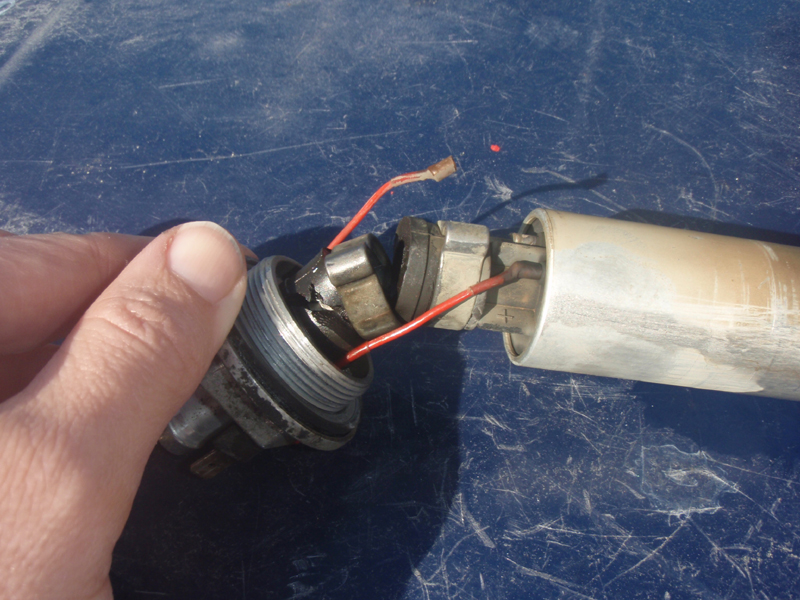
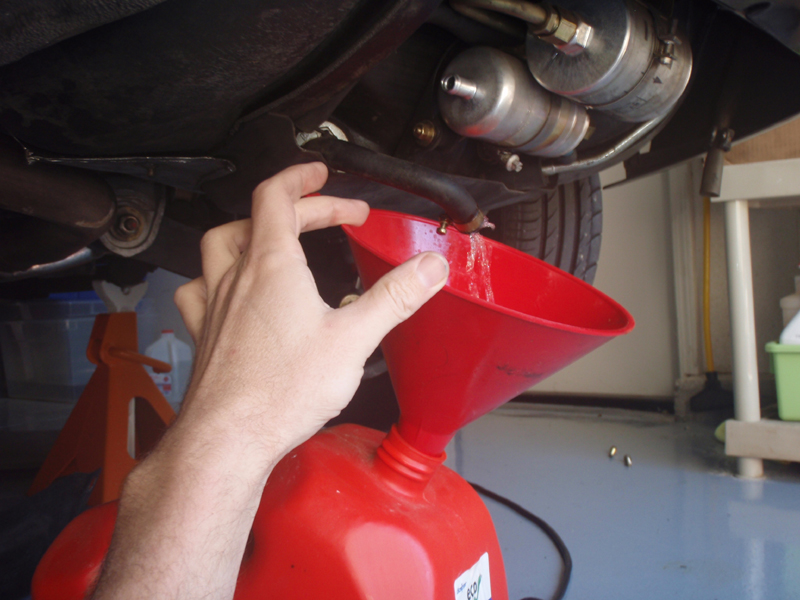
One does not need to drop the fuel tank
support straps all the way out- you can undo the two rear bolts all the way, and
then drop the front bolt about 1-1.5 inches (don't take it out, it'd be a PITA
to re-thread up in there- I needed a 13 mm socket on a U-joint and a 20"
extension to reach it....):
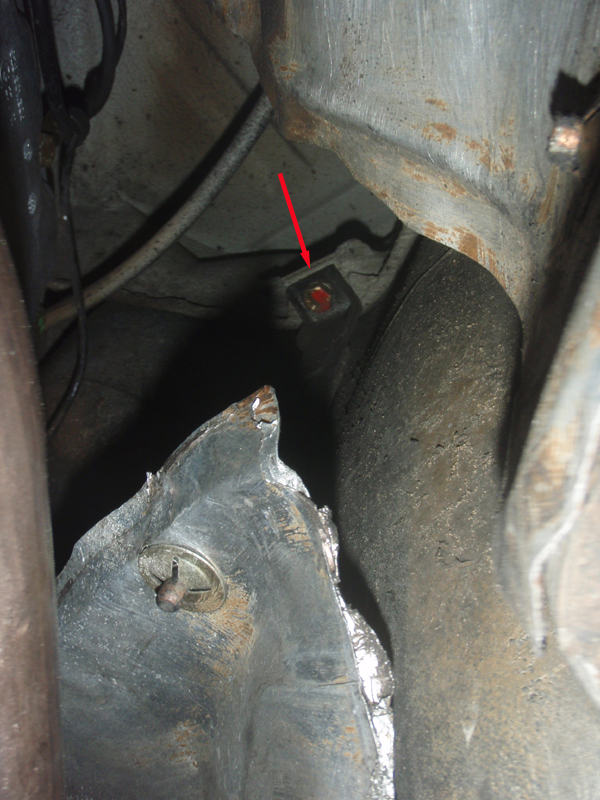
You only need to drop the straps an inch or so, in order to get at the pump connections and clamps. Here's the 36mm socket on the pump, using a 6" extension threaded between the strap and tank:
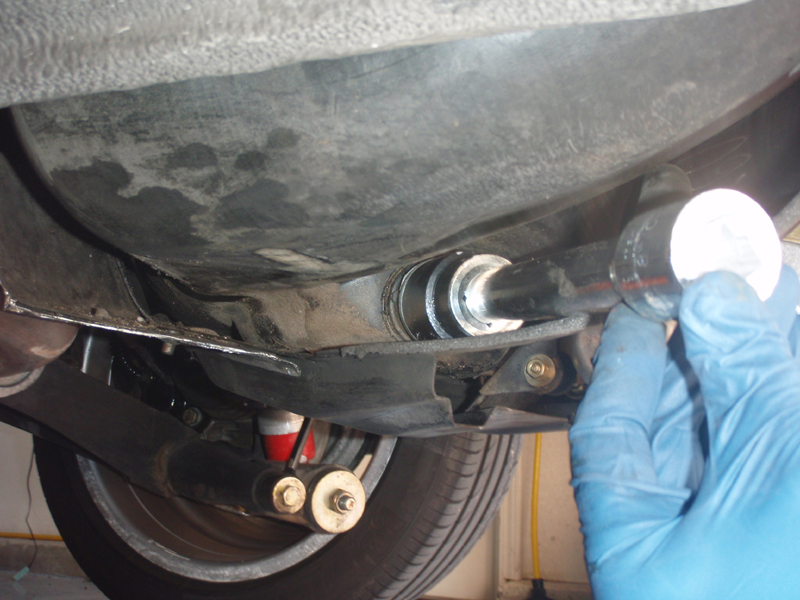
Once out, here's the old pump- failed
exactly as many others have shown previously. I wonder if this is what killed
the first external pump:

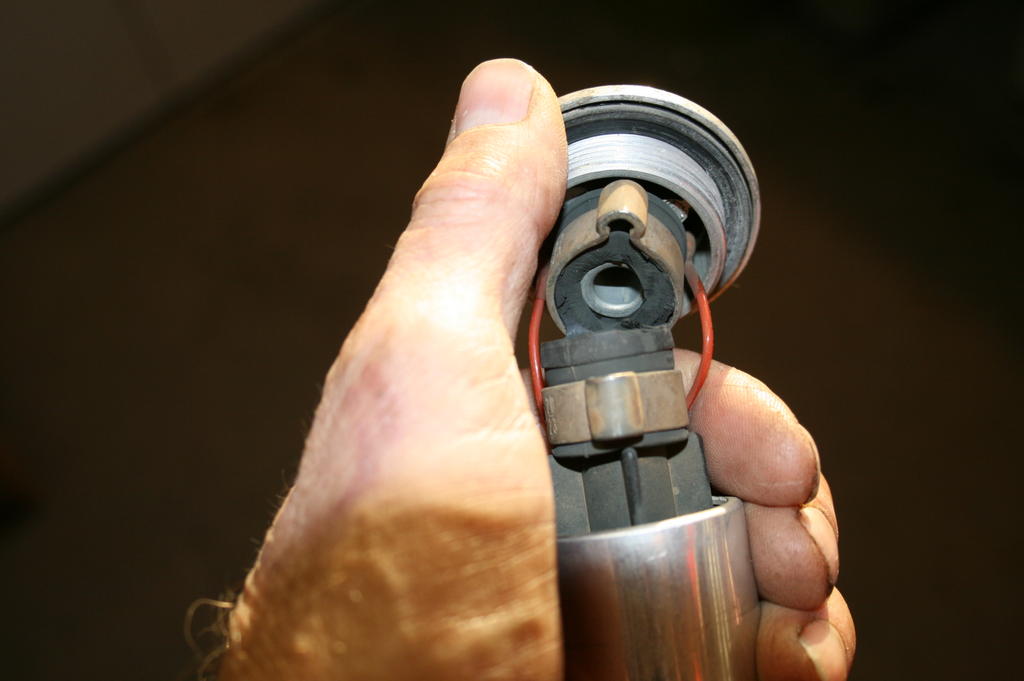
New pump, looking a little better. For
those that want to fix the old pump, the clamps used are Oetiker 20-23 (7/8")
dual ear clamps. The hose is ~12.5 mm ID and 5 mm wall thickness, so OD is ~25
mm.
http://www.use-enco.com/CGI/INSRIT?PMAKA=325-7117&PMPXNO=5873556&PARTPG=INLMK3
The torque spec on the pump is 25 Nm, FWIW.
As an aside, there's a rather large job number printed on the rear of my tank- I
wonder what it refers to?
I pulled the internal fuel pump from the GTS to find that its hose was split
too. Greg has the proper Goodyear/Goodridge 1/2" ID fuel-resistant hose, and
recommended just squeezing open the Oetiker clamps, pulling out the split hose,
and reinstalling/re-crimping them.
The factory piece of hose is 28.5 mm long, give or take. I got a bunch of the
hose from him, so I'm good for 100 years, unless I buy more 928's.
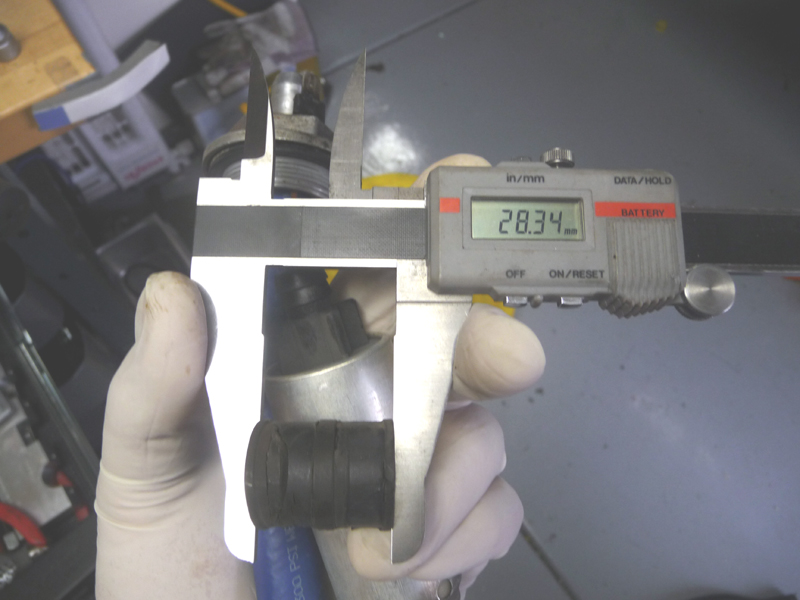
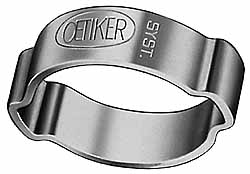
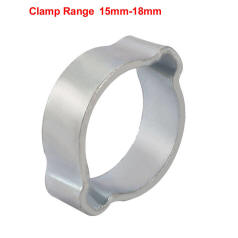
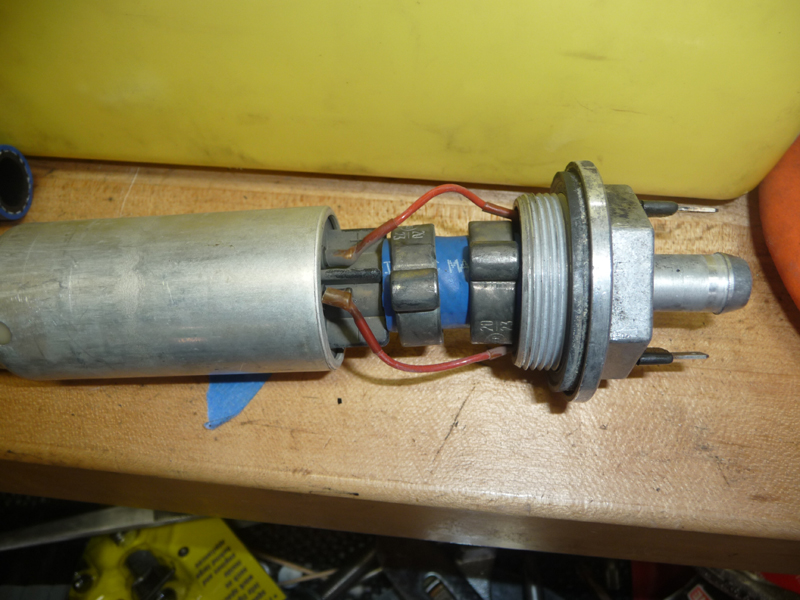
__________________
Rob Edwards
1990 928GT #278, Black/Black, C03 048 418 474 498 538 570 850 691 935 980 112K
miles
1993 928GTS 5-speed, Midnight Blue/Light Gray, C02 139 340 418 474 570 586 650
691 980 XD4 XGB65L 100K miles
*
---------
I replaced my internal pump last summer and the hose connection was cracked
about half-way around. I found the straps to be a real PITA ... I skipped
loosening the bolt in front (no 20" extension, etc.) and just carefully bent the
thing down just enough to reach in and remove the pump.
Well, that was too much bending and the &*(&#)*&$*# thing wouldn't go back up
into place. Ended up using my floor jack to force it up enough to start the
bolts with some half-inch spacers to keep from squashing the tank too much.
The other thing I encountered was the forward edge of the pump body is very,
very close to the diameter of the tank opening ... like no more than a mm of
clearance. The pump body on my new one was not perfectly round, there were two
very slight crimp areas that made it just not round enough that it wouldn't go
in. It took several careful squeezes with my pliers to flatten those spots down
enough for the pump to fit into the opening.
As someone said above, I was very careful not to over tighten the pump since the
threaded insert within the tank could break loose and then you'd be totally
knackered.
BTW, I did buy a 36 MM socket and it came in real handy. Only way I could see to
use any other type wrench would be to remove the strap thing. In the interest of
spring cleaning, I'll be glad to pass it along for $20 to someone who's ready to
go tackle this job, just give me a PM.
Also, I have the old pump if any one would like to have it for cost of shipping
... if you can replace the hose section and get some use out of it, you're
welcome to have it.
__________________
1994 GTS Color 83E
Tom in Austin
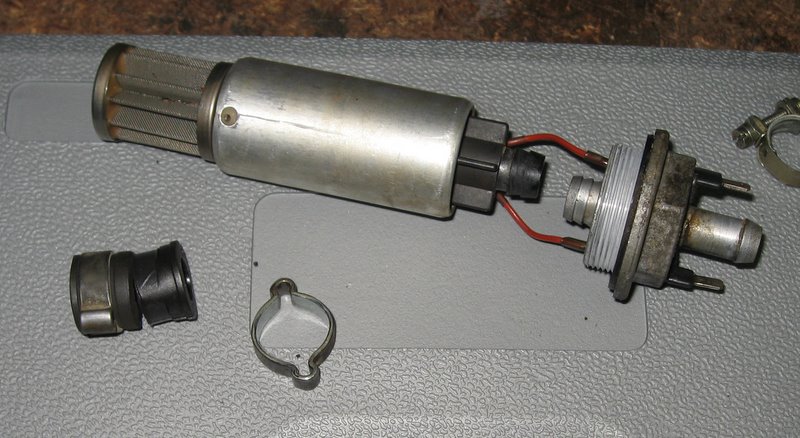
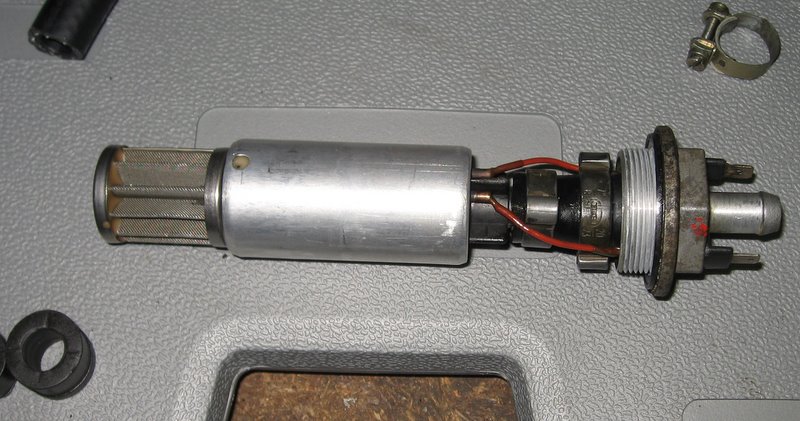
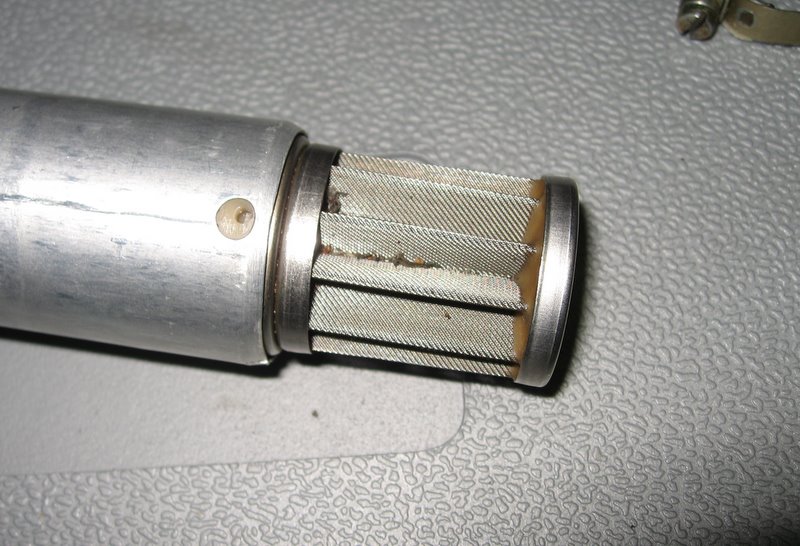
----
I decided to take my in-tank pump
out and check it while I had my fuel tank out anyway (replacing 19 year old
hoses and waiting on a replacement vent hose).
My in-tank pump came out very easily.. needed very little force on a 36mm
spanner to unscrew it the first turn and fingers after that.
Sure enough as found by several here, I had the same hose failure - split
between the two clamps.
Easily replaced with some 15/32 reinforced fuel hose - the shop produced it when
i asked for 1/2 inch and handily it turns out that 15/32 is *just* big enough to
go over the fittings with a bit of spit and a lot of wiggling, and small enough
to re-use the original clamps.
Interestingly the filter on the pump had trapped some material, although I have
no idea if that was before or after the rubber split.. but on the plus side, I
found/fixed this before anything damaged my external pump.
Pics below.. of the split, repaired pump, and crap stuck in the filter.


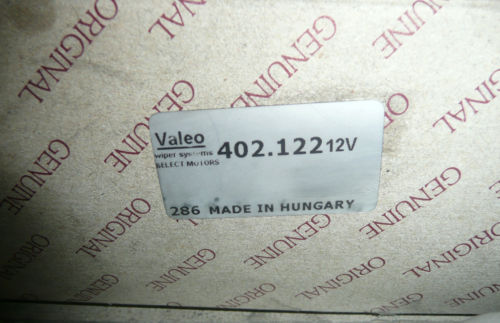
Hilton.
-----------
The in tank pump on my GTS had the same broken hose when I first bought the car.
It was pumping, but not pushing anything through to the secondary pump and
filter. The in tank pump may be small, but my GTS ran like crap until I fixed
it. The hose on my '89 had the same problem, which I also repaired. That's one
of the first things I check now whenever I buy a 928 that uses both pumps. If
you're going to delete the in tank pump, you may want to upgrade the external
pump to one with a higher output than stock.
Paul Mooradian
-----
In 2002 when I got my '91 GT running, I found the intank pump hose broken. I
replaced it with a Porsche original hose. 2 years later I checked the hose and
it was split like the original. I replaced it with SAE 30R7 hose. Now, 3 years
later with no symptoms of problems I checked it again and the 30R7 hose was
fine. I replaced it anyway with USCG type A1 SAE J1527/ISO 7840 1/2" hose. Both
of these hoses have braid. The Porsche hose had no braid. The A1 hose is much
heavier than the 30R7 hose. I would suggest either of these hoses over the OEM
Porsche hose. I would have used 30R10 hose if it was available in 1/2" ID. It
appears that somewhere around 1990 or 1991 that Porsche started using this
inferior hose.
The initial symptoms that I had with the split hoses was missing above 3000 RPM.
__________________
Capt. Earl
-----
I have found this fuel line 20% fluoroelastomer hose Grade A, 1/2" ID, 0.84" OD,
4.32mm wall, Max 248 degree F, 300 PSI from Dudadiesel.com. Minimum one foot
lengths, $4.49. I will get back with the results, when the hose is applied.
I just checked the Gates SAE30R10, which is for submersible applications. It is
available only in 5/16, and 3/8 ID sizes. The only difference I have seen
discussed in either write up is the Gates hose has the aramid compound found in
bullet proof vests. It is not discussed in the Duda Diesel site. MTF
__________________
Gerry Morgan
-------
In MY 89, along with adding the in-tank pump, the fuel lines were switched to "Polyamid"
materials. They might have forgotten to make that change on their new in-tank
pump. The defect on mine was discovered at around 70k miles, even though it had
not caused any trouble.
__________________
Nicole
------
The defect in my tank was exactly as described. I can't say that I experienced any issue, but then again you may get used to things. Anyway, here is a short write up:
Theo Jenniskens
1992 Porsche 928 GTS Midnight Blue